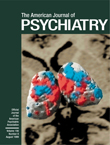In the past decade, the U.S. Center for Substance Abuse Prevention, the leading federal agency for the prevention of substance abuse, provided funding for hundreds of demonstration prevention projects in an effort to stem the tide of substance abuse (alcohol and drugs) in the United States. This book is the story of the results of some of these demonstration projects targeted to culturally diverse populations in the United States.
The authors, all seasoned researchers, selected eight projects to report, and these reports form the substance of this volume. The chapters cover a wide range of preventive approaches, reflecting theories addressing individual and environmental risk factors thought to be contributing to substance abuse in adolescents. The target populations and the associated demonstration programs included African American adolescent girls (“Friend by PEERsuasion”), young Native American children (the Nee-Kon Project), inner-city African American families (the Safe Haven Program), Native American youths (the Logan Square Prevention Project), Asian American youths (Competence Through Transitions), urban middle schools and high schools serving predominantly Hispanic and African American students (the Urban Youth Connection Program), and a program to address the self-perception of personal and communal powerlessness of Native Americans.
The theoretical underpinning of all of these programs is that, because multiple risk factors converged to render an individual at risk for substance abuse, preventive strategies must address a range of individual factors (genetic, emotional, knowledge, attitude, etc.) and environmental factors (family, school, peer group, community economic system, and society at large). Program evaluation designs consist of pre-post test differences following the implementation of strategies aimed at reducing specific risk factors and/or enhancement of specific protective factors thought to have an impact on the incidence of substance abuse.
The challenge of cultural diversity is reflected in both the design and implementation of research strategies. Of necessity, individual programs must be tailored to meet the unique cultural and social needs of each targeted population and community. For example, among Native American groups, the Nee-Kon Project concentrated on environmental factors that place children at high risk for the development of substance abuse. It focused on building resiliency and protective factors in young at-risk Native American children by helping them bond to supportive adults and to school. Families and Head Start staff were involved in interventions designed to make home and school environments more protective. Another prevention program in the Native American community emphasized empowerment to address self-perception of personal and communal powerlessness.
In the Latino and African American communities, the Logan Square Prevention Project addressed problems associated with gang involvement, academic failure, unstructured free time of youth, and acculturation factors. A coalition of neighborhood agencies was organized to implement a comprehensive array of school-based and community-based prevention services.
The Asian American youth program (Competence Through Transitions) emphasized cultural responsiveness. Their approach tapped into the traditional values of Asian parents, who expect their children to excel in academic performance. Acculturation and competence in social transition of immigrants in the areas of social adjustment, intergeneration family adaptation, and involvement of parents and youth in school activities were stressed.
Reading through this volume, one is struck by the diversity of approaches to the challenge of developing substance abuse preventive programs for young people in diverse U.S. communities. Theories on drug abuses and prevention abound, but solid data proving the effectiveness of drug prevention program are few. Evaluation programs are also fraught with methodological challenges, as the chapter authors amply point out. The intervention strategies expounded in this volume are primarily psychosocial and multifactorial. In view of the enormous public health problem of drug abuse confronting our nation, Substance Abuse Prevention in Multicultural Communities offers encouraging documentation of heroic measures attempted by some ethnic communities to stem this tide of social ill. It is heartening to note that the federal government took the initiative to fund substance abuse preventive programs in multicultural communities, but more needs to be done. Teachers, scholars, professionals, and programmers interested in promoting substance abuse prevention program in diverse U.S. ethnic communities will find the experiences assembled in this volume to be useful and instructive.

